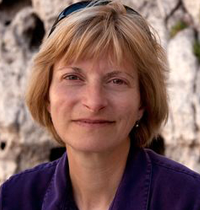NOTE: Images in this archived article have been removed.

A withered tree in the once wet and fertile Colorado River Delta. Next week, a “pulse flow” will begin returning some water to the delta. Photo by Erik Rochner/National Geographic
On Monday, March 24, I leave on a trip to witness an event I never thought I’d see: the Colorado River flowing through its delta toward the sea.
Except in years of unusually high precipitation in its watershed, the Colorado hasn’t coursed through its delta for most of the last half century. Its entire flow – powerful enough to carve the Grand Canyon — is dammed and diverted to supply burgeoning cities and farmlands.
Typically, the Colorado stops running 90 miles before it reaches the Sea of Cortez (also known as the Gulf of California). That has left the river’s delta – once one of the planet’s great desert aquatic ecosystems –bereft of water.
Water is life – that’s why we celebrate World Water Day.
And that’s why
the pulse of water that will soon flow through the delta – and the landmark agreement between the US and Mexico known as
Minute 319 that makes it possible – is cause for big celebration.
Before all the dams and diversions were built, the Colorado Delta was a 2 million-acre expanse of lush wetlands, towering cottonwood and willows, and mazes of green lagoons – fabulous habitat for all manner of birds and wildlife.
Today the delta is a desiccated place. Only 10 percent of the wetlands remain, and much of the life is gone.
But during my first visit to the Colorado Delta, in 1996, I saw first-hand that the delta is not dead. It is merely dormant – waiting for water to return.
I was there on a research and scouting trip with filmmaker
Linda Harrar, who was producing a documentary for PBS based on my first book,
Last Oasis. One day we took a low-altitude flight over the delta with Ed Glenn, a professor at the University of Arizona who has been studying and working in the delta for several decades.
And while the view from the plane was mostly of desiccated, cracked earth, there was a splash of green covering thousands of acres.
It was a wetland area called
La Ciénega de Santa Clara, which had sprung up in a matter of years where salty farm drainage from Arizona was channeled south and discarded into the dried-out delta. Like an oasis in the desert, there were acres upon acres of cattail marshes and lagoons. Waterfowl were everywhere.
It revealed an important lesson: the delta is resilient. With the addition of water, life comes bouncing back.
Next week, a surge of water – and, soon thereafter, more life – will return.
A team from National Geographic and I will be in the delta for the next couple weeks to witness and document
this “pulse flow” through the delta that will mimic the ecologically crucial natural spring flood that occurred every year before the dams were built.
I never dreamed I would see such a day, much less witness it first-hand.

The author with wetlands ecologist Osvel Hinojosa Huerta in the delta last year. Photo by Cheryl Zook/National Geographic
Hinojosa and Pitt co-chair a bi-national working group on the delta’s restoration. Along with
Francisco Zamora of the Sonoran Institute, legal expert
Peter Culp, and delta water rights expert Yamilett Carrillo, now executive director of the Colorado River Delta Water Trust, they were instrumental in bringing Minute 319 to fruition.
As for me, the opportunity to play a small part in the delta’s restoration is nothing less than a dream come true.
On that 1996 trip to the delta, we talked with an elder of
the Cucapá – the “people of the river” – who fished and farmed in the delta for a thousand years. With conviction, the elder said: “I hope one day to see the river rise again.”
His words stuck with me over the years. And although he has passed on, to play a small part in making his hope come alive is a tremendous gift.
Our
Change the Course (CtC) campaign – spearheaded by National Geographic, Bonneville Environmental Foundation, and Participant Media – is supporting the return of 1 billion gallons of water to the delta over the spring and summer of 2014.
On the heels of the pulse flow, which will end around Mary 18, this water will provide nourishing base flows to emergent vegetation and restoration sites to promote their establishment, growth and spread.
To make this happen, CtC is partnering with the Colorado River Delta Water Trust to lease water rights from delta farmers who wish to do so. By enabling farmers to voluntarily lease or sell their water rights and then dedicate that water to the environment, the water trust is playing a crucial role in the delta’s restoration.
A team from National Geographic and I were in the Delta last year (you can see stories, photos and videos
here) and we’ll be there for the coming two weeks to witness and document this transformative moment in the delta. It’s possible the river may even reach the sea – so stay tuned.
By joining Change the Course, anyone can play a part in restoring flow to the Colorado River Basin, including the delta. For every pledge to shrink one’s personal water footprint, CtC returns 1,000 gallons of water to a depleted part of the basin.
So on this World Water Day,
make a free pledge to conserve water, and join us to change the course – for good.
Originally published at National Geographic Newswatch. as This World Water Day, Something Big to Celebrate








